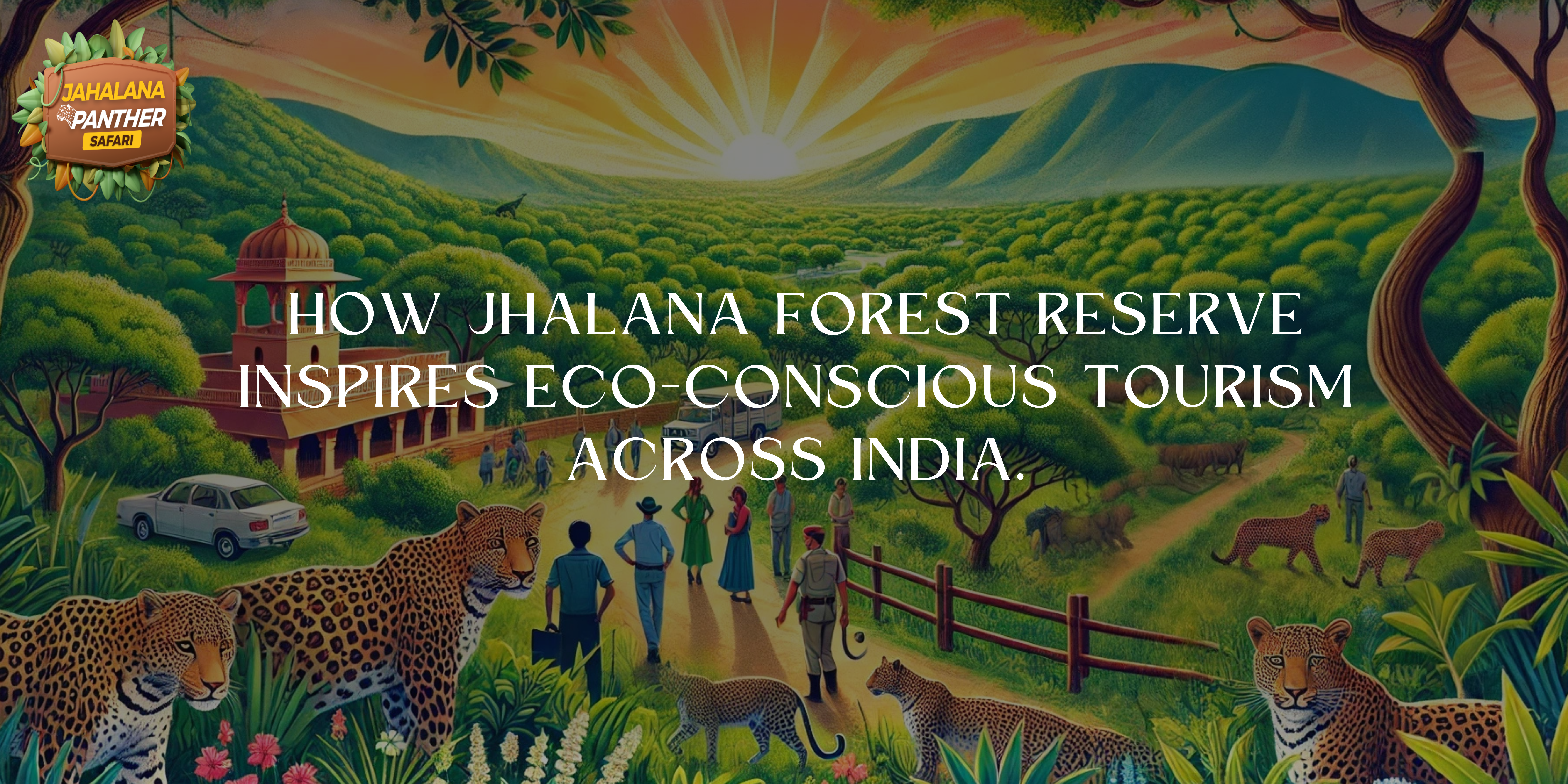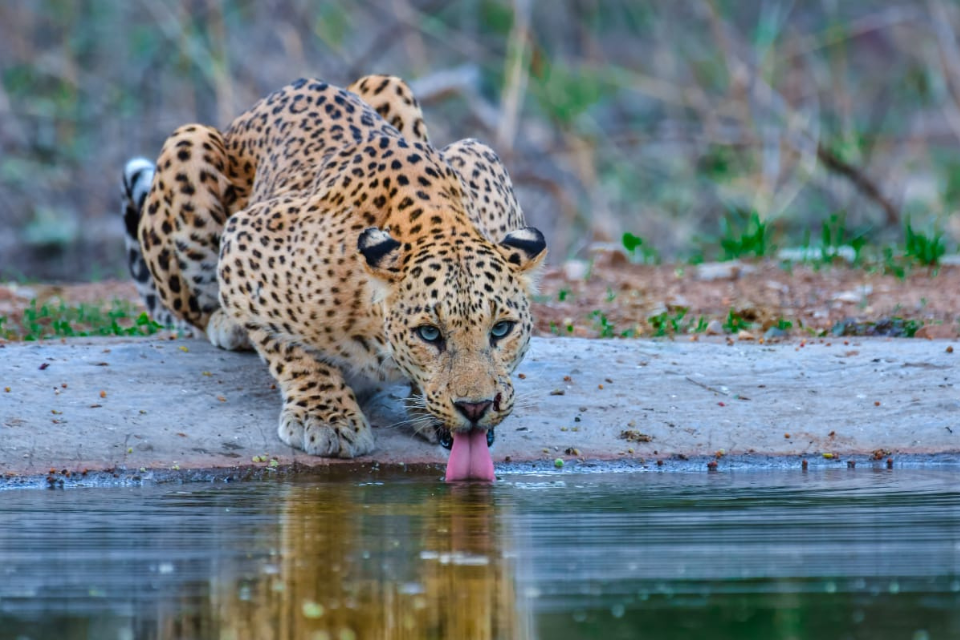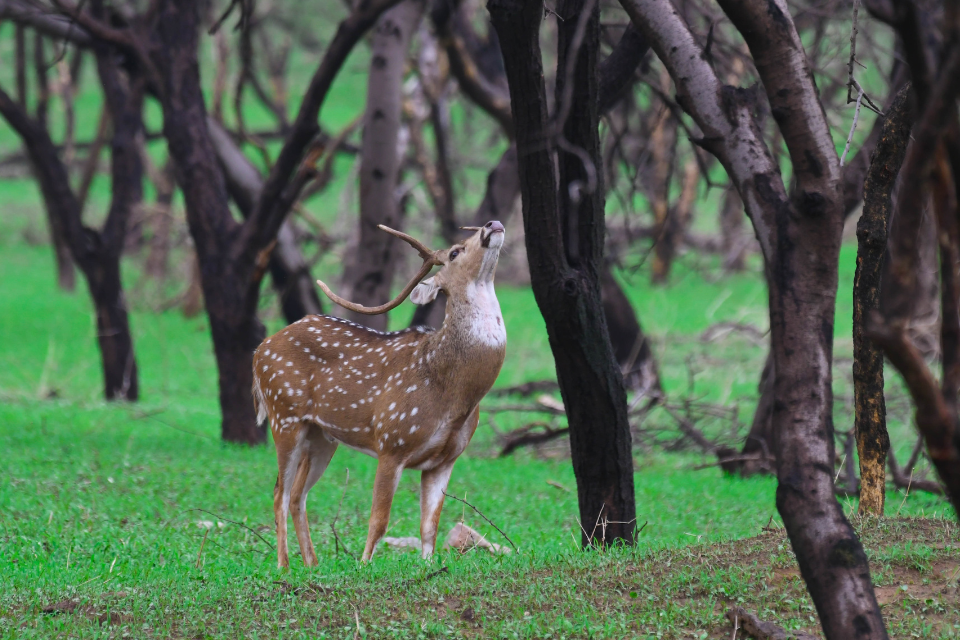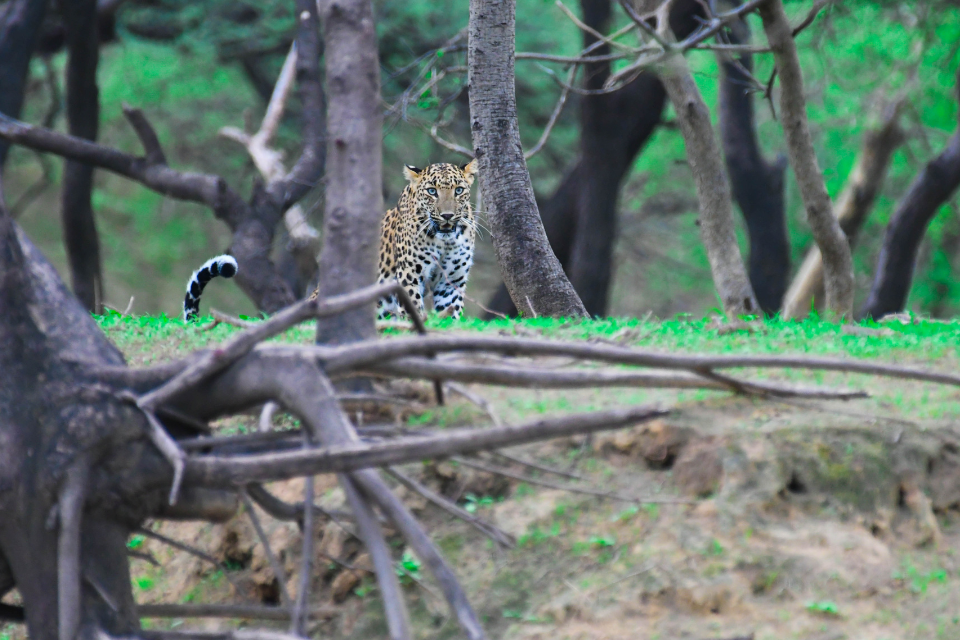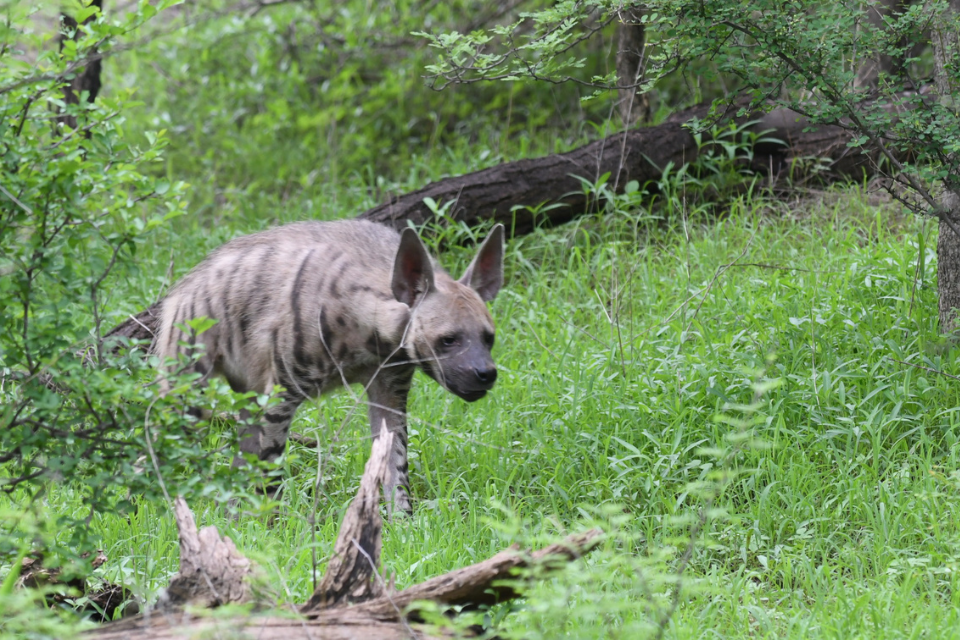- December 2, 2024
How Jhalana Forest Reserve Inspires Eco-Conscious Tourism Across India.
Jhalana Forest Reserve has become a trailblazer in eco-conscious tourism, setting a benchmark for sustainable travel practices. Its unique position as India’s first urban leopard reserve, combined with its focus on conservation and community engagement, has made it a model for other wildlife destinations in the country. By promoting responsible tourism and balancing ecological preservation with visitor experiences, Jhalana serves as a shining example of how tourism can support, rather than harm, nature.
- What is Eco-Conscious Tourism?
Eco-conscious tourism, often referred to as eco-tourism, focuses on:
- Minimizing the environmental impact of tourism.
- Promoting conservation efforts.
- Involving local communities in sustainable development.
- Educating visitors about the importance of preserving natural ecosystems.
Jhalana embodies these principles through its innovative tourism model.

- Jhalana’s Contributions to Eco-Tourism
- Regulated Safari Experiences:
- Limited safari slots and strict guidelines ensure minimal disruption to wildlife and their habitats.
- Electric vehicles are being introduced to further reduce carbon footprints.
- Revenue for Conservation:
- Funds generated from tourism activities are reinvested in habitat restoration, wildlife monitoring, and anti-poaching measures.
- Community-Centered Approach:
- Locals are employed as guides, drivers, and eco-tourism staff, fostering a sense of ownership and responsibility.
- Educational Opportunities:
- Informative tours and workshops educate visitors about Jhalana’s biodiversity and conservation efforts.
- Jhalana’s Impact on Tourism in India
- Inspiring Urban Conservation:
- Jhalana proves that urban areas can support thriving wildlife ecosystems, encouraging cities like Mumbai (Sanjay Gandhi National Park) and Bengaluru (Bannerghatta) to enhance their conservation efforts.
- Boosting Rajasthan’s Tourism Appeal:
- Jhalana adds a unique dimension to Rajasthan’s tourism offerings, complementing the state’s forts and palaces with eco-tourism experiences.
- Promoting Sustainable Practices:
- The reserve serves as a model for balancing tourist inflow with conservation, inspiring other wildlife destinations to adopt similar practices.
- Lessons from Jhalana for Other Eco-Tourism Projects
- Community Involvement is Key:
- Engaging locals ensures the success of eco-tourism initiatives by creating economic incentives and fostering conservation awareness.
- Technology Enhances Conservation:
- Tools like GPS collars, camera traps, and drones used at Jhalana improve wildlife monitoring and management.
- Visitor Education Matters:
- Providing information about eco-friendly practices helps visitors understand their role in conservation.
- Sustainability Must Be a Priority:
- Limiting tourism activities to what the environment can sustain is crucial to preserving ecosystems.

- Challenges in Scaling Eco-Tourism
- Balancing Tourism and Conservation:
- Increasing visitor demand can strain natural resources and disturb wildlife if not managed properly.
- Urban Encroachment:
- Protecting green spaces like Jhalana amidst rapid urbanization is an ongoing challenge.
- Seasonal Variations:
- Tourism-dependent communities face income fluctuations due to seasonal visitor inflow.
- Visitor Compliance:
- Ensuring that tourists follow eco-tourism guidelines is essential but challenging.
- How Visitors Can Support Eco-Tourism
- Choose Sustainable Operators:
- Opt for safari operators and accommodations that prioritize sustainability and local involvement.
- Adopt Responsible Practices:
- Avoid littering, maintain silence during safaris, and use eco-friendly products.
- Spread Awareness:
- Share your experiences to encourage others to visit eco-tourism destinations and support conservation.
- Contribute to Conservation:
- Donate to wildlife protection programs or participate in volunteer initiatives.

- Future Opportunities for Eco-Tourism Inspired by Jhalana
- Expanding Green Corridors:
- Connecting urban reserves like Jhalana with larger sanctuaries can enhance habitat connectivity and support biodiversity.
- Introducing Eco-Friendly Infrastructure:
- Solar-powered facilities, waste recycling programs, and sustainable accommodations can minimize tourism’s ecological impact.
- Collaborative Efforts:
- Partnerships between conservationists, government bodies, and private entities can amplify the benefits of eco-tourism.
- Broader Impact on India’s Tourism Industry
- Raising Global Standards:
- Jhalana positions India as a leader in eco-tourism, attracting environmentally conscious travelers.
- Encouraging Domestic Tourism:
- By highlighting sustainable practices, Jhalana inspires Indian travelers to explore and support conservation-focused destinations.
- Setting a Precedent:
- Other states are following Jhalana’s model, creating more eco-friendly reserves and promoting wildlife conservation.
Conclusion
Jhalana Forest Reserve exemplifies how eco-conscious tourism can benefit both the environment and local communities. By integrating conservation with sustainable travel practices, Jhalana has inspired a movement that extends beyond its boundaries, influencing wildlife reserves and urban ecosystems across India. For eco-conscious travelers, Jhalana offers more than a safari—it’s a chance to contribute to a brighter, greener future.
Disclaimer All images used in this blog are either sourced from public domain or credited to their respective owners. If you are the copyright holder of any image and wish to request its removal or proper attribution, please contact us at [email protected]
